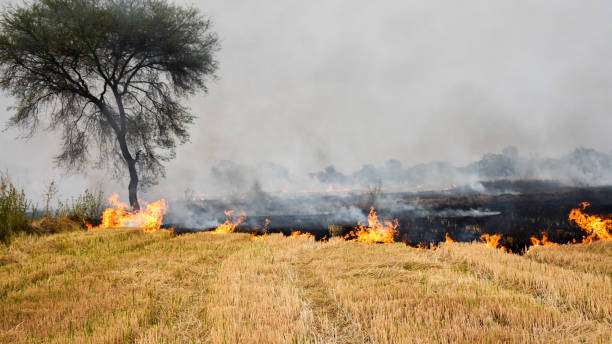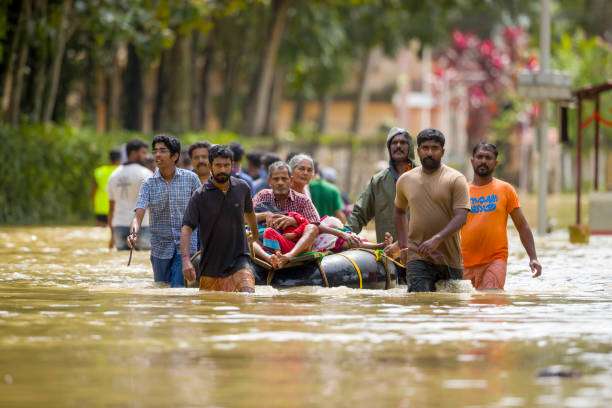Effective Strategies for Emergency Planning and Disaster Management
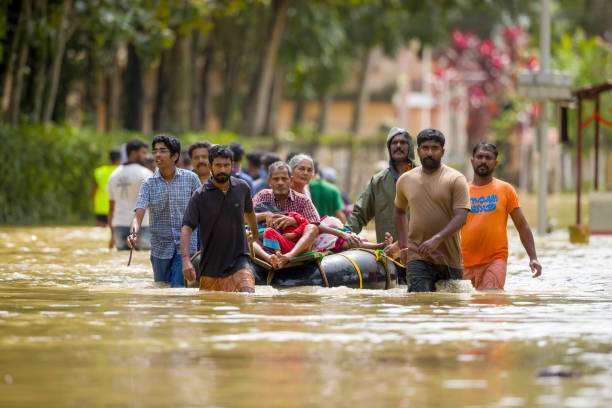
September 19, 2023
Disaster management is essential for protecting people, property, and livelihoods in the face of natural disasters. With the right strategies in place, it doesn’t have to be a daunting task. In this blog post, we’ll explore effective strategies for emergency planning, including risk assessment, hazard identification, early warning systems, community engagement, education, resilience, communication protocols, resource allocation, logistics, training, capacity building, and more. Read on to find out how you can create a comprehensive disaster management plan and ensure the safety of your community!
Understanding the Importance of Disaster Management
As extreme weather and other natural disasters become more prominent, the importance of disaster management in safeguarding people, property, and livelihoods is becoming increasingly clear. When disasters strike, understanding the various aspects of disaster management – from risk assessment and disaster prevention to crisis response and post-disaster recovery – is essential in preventing further damage and ensuring people emerge with minimal casualties. In this blog post, we’ll be discussing the various aspects of disaster management in detail, how it helps protect people and infrastructure, and the various strategies for ensuring effective disaster management.
Disaster Management, Risk Reduction, Disaster Mitigation, Disaster Preparedness, Early Warning System, Disaster Recovery, Risk Assessment, Climate Resilience, Disaster Resilience, Disaster Prevention, Emergency Response, Disaster Relief, Post-Disaster Recovery, Hazard Management, Evacuation Strategies, Disaster Education, Crisis Management, Fire Protection, Flood Protection, Earthquake Protection, Climate Change Adaptation, Crisis Communication, Disaster Insurance, Mental Health and Disasters, The Vital Role of Disaster Management in Reducing Injuries and Health Risks, Protecting Property and Infrastructure Through Disaster Management, Ensuring Continuity of Services with Proper Disaster Management, Fostering Community Resilience Through Disaster Management, Mitigating Environmental Impact with Disaster Management Strategies
Disaster management is essential in helping to protect people, property, and livelihoods. By understanding the various aspects of disaster management, from risk assessment and prevention to crisis response and post-disaster recovery, communities can take the necessary steps to prevent further damage and ensure people emerge with minimal casualties. This blog post will cover the key elements of disaster management, its importance, and how it can help reduce the effects of disasters.
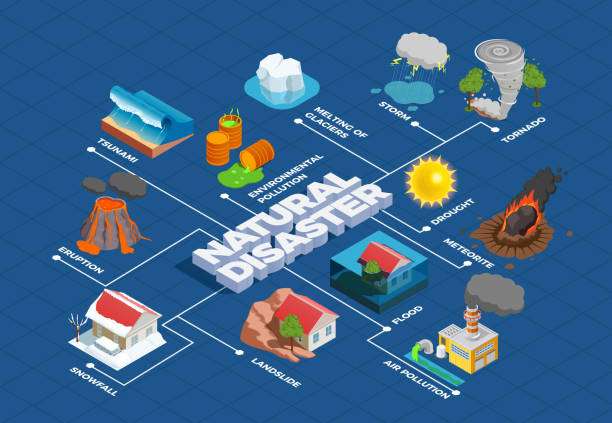
Disaster risk reduction is an important first step in disaster management. This involves identifying the risks posed by disasters and the steps needed to manage and mitigate these risks. By assessing potential risks, governments and communities can better prepare for future disasters. Risk mitigation strategies can include structural measures such as building standards, environmental measures such as enhancing flood protection, and policy measures such as developing effective early warning systems.
Disaster preparedness is another important component of disaster management. This includes developing emergency plans, providing training and resources for first responders, and ensuring people have access to vital communication and warning systems. Preparation is key to ensuring a community is better able to respond effectively to an emergency.
In addition, disaster response is a critical part of disaster management. Communities must be prepared to respond quickly and effectively to any disaster that may occur. This includes ensuring safety protocols are in place, providing emergency aid and shelter, and preparing infrastructure for recovery.
Finally, post-disaster recovery is also an important part of disaster management. This involves coordinating assistance to restore infrastructure, provide relief for affected communities, and ensure people affected by disasters can rebuild their lives.
By understanding and implementing disaster management strategies, communities can better protect people, property, and livelihoods. Risk assessment and prevention, disaster preparedness, crisis response, and post-disaster recovery are all crucial elements of disaster management and help to reduce the impacts of disasters on communities. A comprehensive approach to disaster management is essential in helping communities to respond and recover from disasters and protect people from harm.
As climate change and other natural disasters cause increasing amounts of destruction, the need for effective disaster management is more important than ever. Disaster management encompasses a wide range of strategies, from risk assessment and disaster prevention to crisis response and post-disaster recovery. It helps protect people and infrastructure, and can significantly reduce casualties when a disaster takes place. Strategies such as risk reduction, disaster mitigation, preparedness, early warning systems, relief, and post-disaster recovery are all essential components of effective disaster management. Additionally, other measures such as fire protection, flood protection, earthquake protection, climate change adaptation, crisis communication, disaster insurance, and mental health support can also help to mitigate the effects of natural disasters. Disaster management is always essential, as it can help save lives, preserve livelihoods, and protect property and infrastructure.

Disaster management is a critical aspect of safeguarding communities and minimizing the impact of natural or human-induced catastrophes. Here are several key reasons why disaster management is of paramount importance:
Saves Lives: Prompt and effective disaster management can significantly reduce the loss of life during a crisis. Preparedness, early warning systems, and evacuation plans can help evacuate people from dangerous areas before disasters strike.
Reduces Injuries and Health Risks: Proper disaster management helps prevent injuries and minimizes health risks associated with disasters. This includes providing immediate medical care, ensuring access to clean water and sanitation, and preventing the outbreak of diseases.
Protects Property and Infrastructure: Effective disaster management measures can help safeguard homes, buildings, and critical infrastructure such as hospitals, power plants, and transportation systems. This not only preserves valuable assets but also facilitates a faster recovery after the event.
Preserves Livelihoods: By preparing for disasters, communities can protect their economic activities. This includes businesses, farms, and industries that are essential for sustaining the livelihoods of individuals and families.
Ensures Continuity of Services: Proper disaster management plans ensure that essential services like healthcare, emergency response, and utilities continue to function even during and after a disaster. This helps maintain a semblance of normalcy and stability in the affected areas.
Reduces Economic Impact: Disasters can have severe economic consequences, both in terms of immediate response costs and long-term recovery efforts. Well-managed disaster planning and response can help minimize these economic losses.
Fosters Community Resilience: Disaster management promotes community resilience, which refers to the ability of a community to bounce back and recover from a disaster. This includes not only physical infrastructure but also social and economic factors that contribute to recovery.
Enhances Coordination and Communication: Disaster management involves coordination among various agencies, government bodies, NGOs, and community groups. Effective communication and collaboration are crucial for a unified and efficient response.

Raises Awareness and Preparedness: Disaster management programs help raise awareness about potential hazards and educate communities on how to prepare for them. This empowers individuals to take proactive steps to protect themselves and their families.
Mitigates Environmental Impact: Proper planning can help minimize the environmental impact of disasters. For example, by avoiding construction in flood-prone areas or implementing proper waste disposal methods, the environmental fallout from disasters can be reduced.
Adapts to Climate Change: With the increasing frequency and intensity of extreme weather events due to climate change, disaster management becomes even more crucial. It involves adapting to new climate realities and implementing strategies to protect communities from changing environmental conditions.
Overall, disaster management is essential for building resilient communities that can withstand, respond to, and recover from disasters effectively, ultimately saving lives and safeguarding the well-being of individuals and societies.
Protect Your Property and Livelihood with Effective Disaster Management
Ensure your safety and reduce the impact of natural disasters with advanced strategies of disaster management
Disaster management is essential for reducing the impact of natural disasters on your property, infrastructure, and livelihoods. Protect your family and community by investing in an effective disaster management plan that will give you peace of mind in times of crisis.
- Comprehensive risk assessment and risk reduction strategies
- Disaster preparedness and early warning systems
- Emergency response and disaster relief
- Post-disaster recovery and resilience building
- Effective hazard management and evacuation strategies
What is Disaster Management? Learn About Effective Strategies for Emergency Planning.
Disaster management can seem like an overwhelming task, but with the right strategies in place, it doesn’t have to be. Effective preparation and planning are essential for effective disaster management, as well as understanding and responding to risks. In this blog post, we'll explore strategies for emergency planning, including risk assessment, hazard identification, emergency response plans, early warning systems, community engagement, education, resilience, communication protocols, resource allocation, logistics, training, capacity building, and other essential elements. We'll also discuss how to execute these strategies and develop a comprehensive disaster management plan. So, if you’re looking to learn more about preparing for disasters, this post has all the information you need.
Disaster management is an essential component of any emergency planning, and it’s important to have the right strategies in place to ensure an effective response. Risk assessment, hazard identification, emergency response plans, early warning systems, community engagement, education, resilience, communication protocols, resource allocation, logistics, training, capacity building, coordination, collaboration, monitoring, evaluation, recovery, rehabilitation, legal frameworks, and policy frameworks are all key elements of effective disaster management.
When developing a disaster management plan, it’s important to identify your disaster risks and understand the hazards that affect your region. By conducting an initial risk assessment, you can identify potential disasters and create strategies to mitigate them. You should also develop effective communication protocols to ensure your community is informed about any potential emergencies. Additionally, it’s important to build resilience by developing sustainable land use plans and early warning systems to prepare for any disasters that may occur.
Creating an effective emergency response plan is essential for responding to any disaster. This includes securing resources and logistics for an emergency, identifying available resources, and training personnel to ensure an effective response. Additionally, it’s important to strengthen collaboration and coordination among different stakeholders to ensure an effective response. Furthermore, it’s important to monitor and evaluate the plan to ensure that it is up-to-date and can respond to any changing situation.
Overall, disaster management requires careful preparation and planning. By taking the time to assess risks, identify hazards, create emergency plans, and strengthen communication protocols and collaboration, you can ensure that your community is prepared for any disasters that may occur. By following the strategies outlined above, you can ensure effective disaster management and build a stronger, more resilient community.
Disaster management is a complex process that requires effective strategies in order to be successful. One such strategy includes risk assessment, where potential hazards and risks are identified in order to better prepare for any disaster. Other strategies, such as emergency response plans, early warning systems, community engagement, and education are also crucial elements. Additionally, resilience, communication protocols, resource allocation, logistics, training, capacity building, coordination, collaboration, monitoring, evaluation, recovery, rehabilitation, legal frameworks, policy frameworks, and disaster preparedness and mitigation are all necessary components of emergency planning. All of these strategies can help better prepare for any disaster and lead to an effective response in the event of one.
Disaster management, also known as emergency management, refers to the organized efforts and activities put in place to prepare for, respond to, mitigate, and recover from natural or human-made disasters. It encompasses a range of activities aimed at protecting lives, property, and the environment in the face of emergencies.

Effective Strategies for Emergency Planning:
Risk Assessment and Hazard Identification: Understanding the types of disasters that a region is susceptible to is crucial. This involves analyzing historical data, studying geological and meteorological patterns, and identifying potential human-induced risks.
Developing Emergency Response Plans: These plans outline the steps to be taken during an emergency. They include evacuation procedures, communication protocols, coordination mechanisms, and allocation of resources.
Early Warning Systems: Establishing robust early warning systems helps provide timely information about imminent disasters. This includes meteorological warnings, earthquake alerts, and flood forecasts. It's crucial to give people adequate time to prepare or evacuate.
Community Engagement and Education: Raising awareness and educating the public about potential risks and how to respond is vital. This includes conducting drills, workshops, and public information campaigns.
Building Resilience: Enhancing the capacity of communities to withstand and recover from disasters is a key component. This involves fortifying infrastructure, constructing buildings to withstand specific hazards, and promoting sustainable land-use planning.
Establishing Communication Protocols: Effective communication is essential during emergencies. Plans should address how information is disseminated to the public, how agencies and organizations coordinate, and how families can contact and find each other.
Resource Allocation and Logistics: Ensuring that resources such as medical supplies, food, water, and emergency response personnel are available and properly deployed is critical for an effective response.
Training and Capacity Building: Regular training and drills help emergency responders and community members understand their roles and responsibilities during a disaster. This includes simulating different scenarios to test the effectiveness of response plans.
Coordination and Collaboration: Disaster management often involves multiple agencies, including government bodies, non-profit organizations, and private sector entities. Effective coordination and collaboration among these entities are essential for a unified response.
Continuous Monitoring and Evaluation: Regularly reviewing and updating emergency plans is crucial to ensure they remain relevant and effective. This includes analyzing past responses, identifying areas for improvement, and incorporating lessons learned.
Recovery and Rehabilitation: After a disaster, the focus shifts to recovery efforts, which may include rebuilding infrastructure, providing support to affected individuals and families, and restoring essential services.
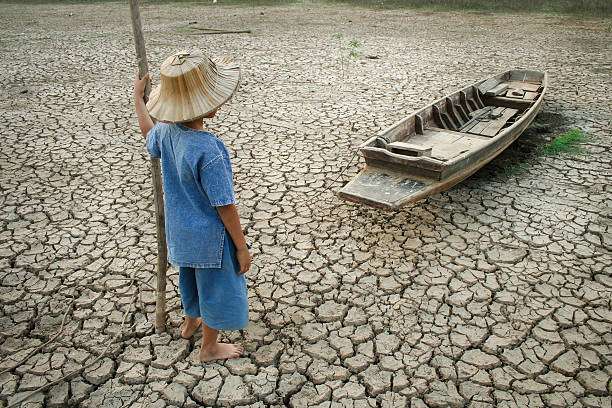
Legal and Policy Frameworks: Clear legal frameworks and policies provide the authority and guidance necessary for effective disaster management. This includes legislation related to preparedness, response, recovery, and mitigation.
By implementing these strategies, communities can enhance their preparedness and response capabilities, ultimately reducing the impact of disasters and protecting the well-being of their residents.
Prepare for Disasters with a Comprehensive Disaster Management Plan
Do you want to make sure your organization is prepared for disasters? With our Comprehensive Disaster Management Plan, you’ll get the strategies and tools needed to plan for and respond to risks effectively. Our plan outlines key elements of emergency planning, such as risk assessment, hazard identification, emergency response plans, early warning systems, community engagement, education, resilience, communication protocols, resource allocation, logistics, training, capacity building, and more. Plus, we’ll help you understand how to develop a comprehensive disaster management plan, so you can be sure you’re ready for anything.
- Risk assessment
- Identifying hazards
- Emergency response plans
- Early warning systems
- Resilience planning
Risk Reduction Techniques for Effective Disaster Management
In order to effectively manage disasters, there are a variety of risk reduction techniques that can be employed. These include creating plans and strategies to help mitigate the loss of life and property, improving building standards, and educating the public about potential hazards. Additionally, establishing early warning systems, investing in infrastructure, and implementing operational responses can all help reduce the risk of harm from disasters.
Harnessing Climate Resilience for Disaster Mitigation
We need to focus our efforts on developing climate resilience to protect against the effects of disasters. By understanding how extreme weather impacts our environment, we can devise strategies to reduce the severity when such events occur, thus minimizing damage and helping to mitigate disasters.
Crafting Disaster Prevention Strategies for Your Community
Crafting strategies to help prevent disasters in your community is an important task to ensure that its citizens stay safe. Knowing how to prepare for and respond to potential disasters is key to protecting the well-being of your community. There are several steps that can be taken to create a comprehensive disaster prevention plan. These include assessing the risk of natural hazards, developing warning systems, creating evacuation plans, supplying information to the public, and training staff on emergency procedures. By following these steps, communities can effectively reduce the threat of catastrophes and prepare to handle them if they occur.
Securing Your Future with Disaster Preparedness
Disaster preparedness is an essential step toward protecting your future. Preparation for natural disasters, accidents, and other unfortunate events can help to safeguard your family, home, and belongings and minimize damage. Taking the necessary measures now to be ready for potential hazards can make a significant difference in the long run. Establishing an emergency plan and creating a kit with basic supplies and essentials can ensure that you remain secure and safe. By planning ahead, you will be better equipped to handle any situation that comes your way.
Establishing Early Warning Systems to Prepare for Disasters
Early warning systems can be implemented to help prepare for disasters. Such systems allow for more effective and timely responses to potential risks and hazards, thereby reducing the likelihood and severity of disasters. These systems provide proactive monitoring and monitoring of environmental and social factors to identify signs of potential disasters, enabling authorities to take the necessary steps to mitigate the potential risks. By doing so, the negative impacts of disasters can be minimized, providing more safety and security to individuals and communities.
Implementing Effective Disaster Recovery Strategies
Disaster recovery plans should be implemented in order to ensure a well-prepared system for situations of unplanned disruption or crisis. Such plans should include a comprehensive strategy for identifying and responding to a range of disasters, as well as contingencies for restoring operations quickly and effectively. Key elements of an effective disaster recovery strategy include creating a comprehensive business continuity plan, investing in reliable backup systems, and strengthening staff awareness and training.
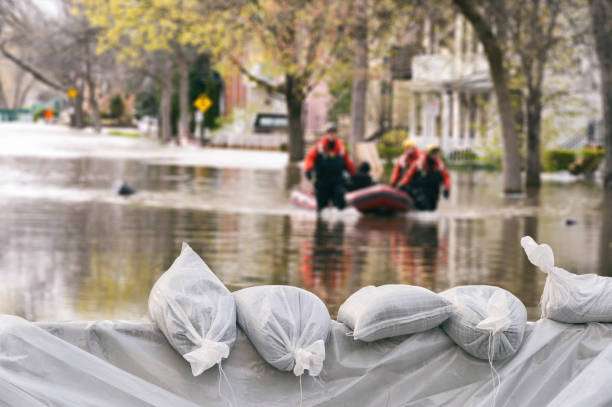
Essential Risk Assessment Techniques for Disaster Management
Identify and analyze potential risks: It is necessary to carefully identify and analyze any risks that could potentially occur in order to create an effective disaster management plan. Analyzing current systems and processes, along with any external risk factors, can help determine the vulnerability of any organization or system.
Create risk mitigation strategies: After identifying and analyzing possible risks, it is important to create strategies to mitigate them. This includes developing policies and procedures to prevent, respond to, and recover from potential disasters.
Monitor and review: The risk assessment process must be monitored and reviewed on a regular basis to ensure its efficacy. This can include regularly evaluating existing mitigation strategies and developing new ones.
Communicate: Effective communication of risk assessment practices is essential for successful disaster management. Disseminating this information to all relevant stakeholders ensures they are aware of potential risks as well as any strategies that have been put in place to mitigate them.
Maximizing Disaster Resilience Through Hazard Management
Hazard management is key to maximizing disaster resilience, as it allows for proactive prevention of potential disasters. This can be done through preparedness and mitigation measures such as hardening infrastructure, strengthening building codes, instituting evacuation procedures, and developing early-warning systems. Moreover, developing risk assessment methods, establishing hazard mapping, and formulating contingency plans can ensure that the response to a potential disaster is swift and efficient.
Creating Emergency Response Plans for Effective Disaster Relief
Creating an effective emergency response plan for disaster relief is essential in order to ensure that the necessary resources and personnel can be provided in a timely manner. Such a plan should focus on anticipating the potential for disasters and the appropriate measures to be taken in the event of one occurring. This should include an analysis of the potential risks, assigning roles and responsibilities, creating communication protocols and a timeline for response, and determining the resources needed. All of these require careful planning and consideration, allowing for swift and efficient relief in the event of an emergency.
Utilizing Evacuation Strategies to Keep Your Community Safe
In order to ensure the safety of everyone in a community, evacuation strategies should be adopted and implemented. These strategies involve the evaluation of potential risks, the development of safety plans, and the implementation of evacuation protocols. By taking a proactive approach, local officials can create effective measures to help move people away from dangerous areas, provide them with resources and shelter, and support them in the event of an emergency.
Summary

- Disaster management is essential for protecting people, property, and livelihoods in the face of natural disasters.
- Effective strategies for emergency planning include risk assessment, hazard identification, early warning systems, community engagement, education, resilience, communication protocols, resource allocation, logistics, training, capacity building, etc.
- Disaster risk reduction is an important first step in disaster management. Disaster preparedness includes developing emergency plans, providing training and resources for first responders, and ensuring people have access to vital communication and warning systems. Disaster response is critical for communities to respond quickly and effectively to any disaster that may occur. Post-disaster recovery is important for coordinating assistance to restore infrastructure, provide relief for affected communities, and ensure people affected by disasters can rebuild their lives.
Have you heard the latest news about the potential government shutdown? It's causing quite a stir, especially with the possibility of halting shipments of critical weapons and U.S. military training. 🇺🇸
But don't worry, we've got you covered! At Sanjay Lathiya, we're all about planning for the unexpected. Our latest blog post titled "Effective Strategies for Emergency Planning and Disaster Management" is a must-read in these uncertain times.
We provide comprehensive strategies to ensure your operations continue smoothly, no matter what's happening in the world. Our commitment to 100% customer happiness is unwavering, even in the face of potential disruptions.
Check out our blog post here: https://www.sanjaylathiya.com/blog/effective-strategies-for-emergency-planning-and-disaster-management-/

#SanjayLathiya #EmergencyPlanning #DisasterManagement #GovernmentShutdown #StayPrepared #StaySafe
FAQS
Q1: What is disaster management?
A1: Disaster management is the process of preparing for and responding to disasters in order to reduce their impact on people, property, and infrastructure.
Q2: What strategies should be used for effective disaster management?
A2: Strategies for effective disaster management include risk assessment, hazard identification, emergency response plans, early warning systems, community engagement, education, resilience, communication protocols, resource allocation, logistics, training, capacity building, coordination, collaboration, monitoring, evaluation, recovery, rehabilitation, legal frameworks, and policy frameworks.
Q3: How can I assess the risks associated with potential disasters?
A3: Risk assessment involves identifying and rating the potential hazards that could affect a region, at both local and broader scales. This helps to identify areas that may be more vulnerable to certain kinds of disasters and can help to inform strategies for disaster prevention and management.
Q4: What are the steps for developing an emergency response plan?
A4: An effective emergency response plan should include detailed steps for preparation, notification, evacuation, resource coordination, and post-disaster recovery. It should also include emergency contact details, documentation of essential procedures and equipment, and backup resources in case of a disaster.

Q5: How can I prepare my community for a disaster?
A5: To prepare your community for a disaster, it is important to engage the public in understanding the risks and hazards involved, as well as strategies for disaster management. It is also important to ensure that effective communication protocols are in place and that disaster response plans are regularly tested and updated. Capacity building, training, and education are also essential in ensuring the community is well-prepared.
